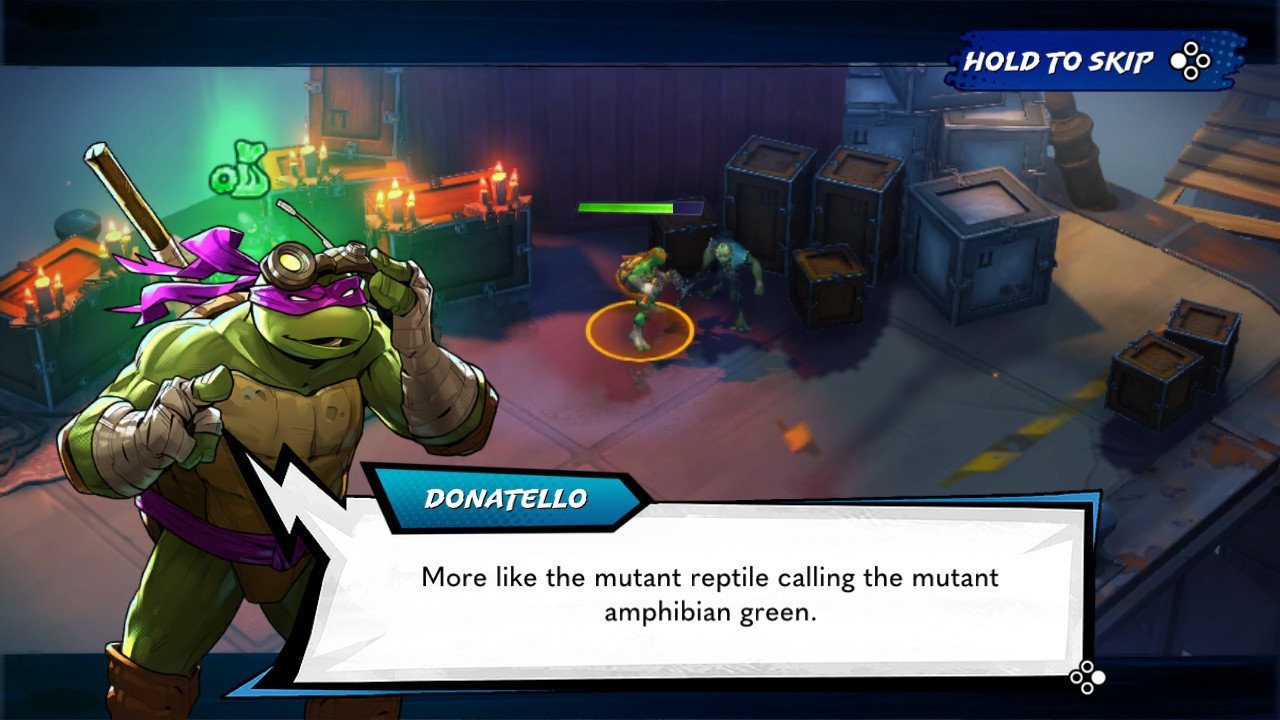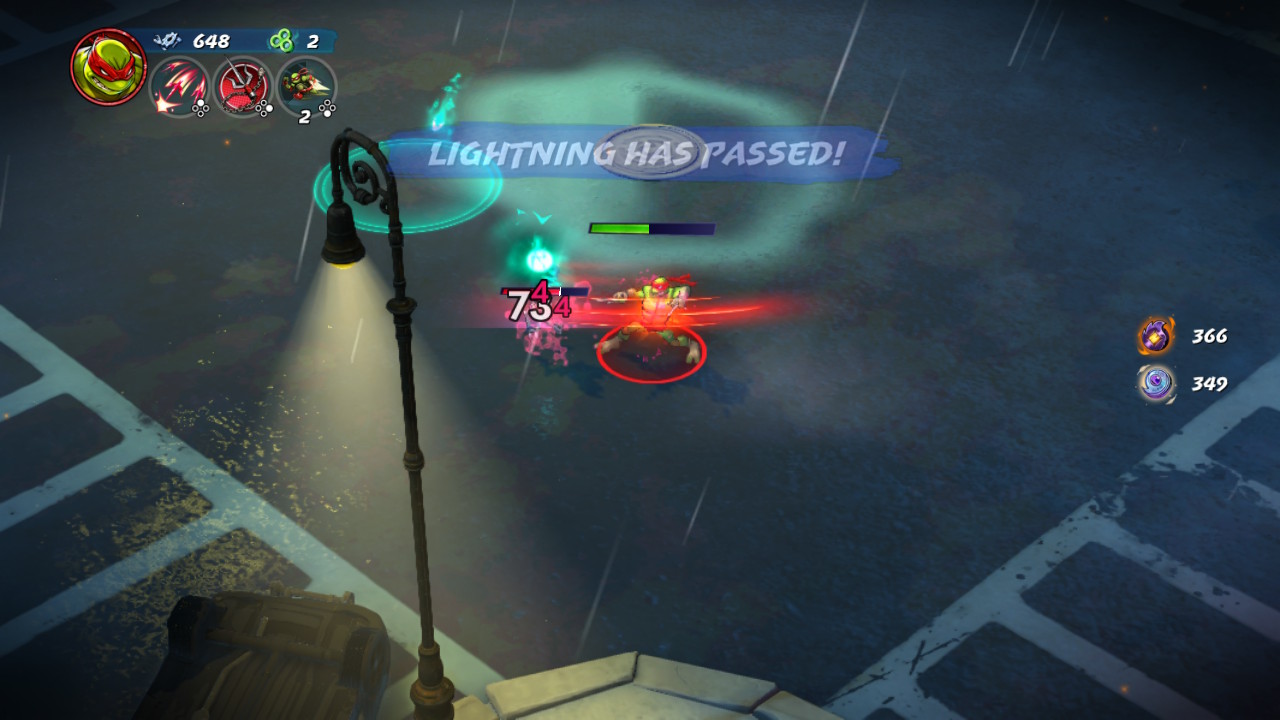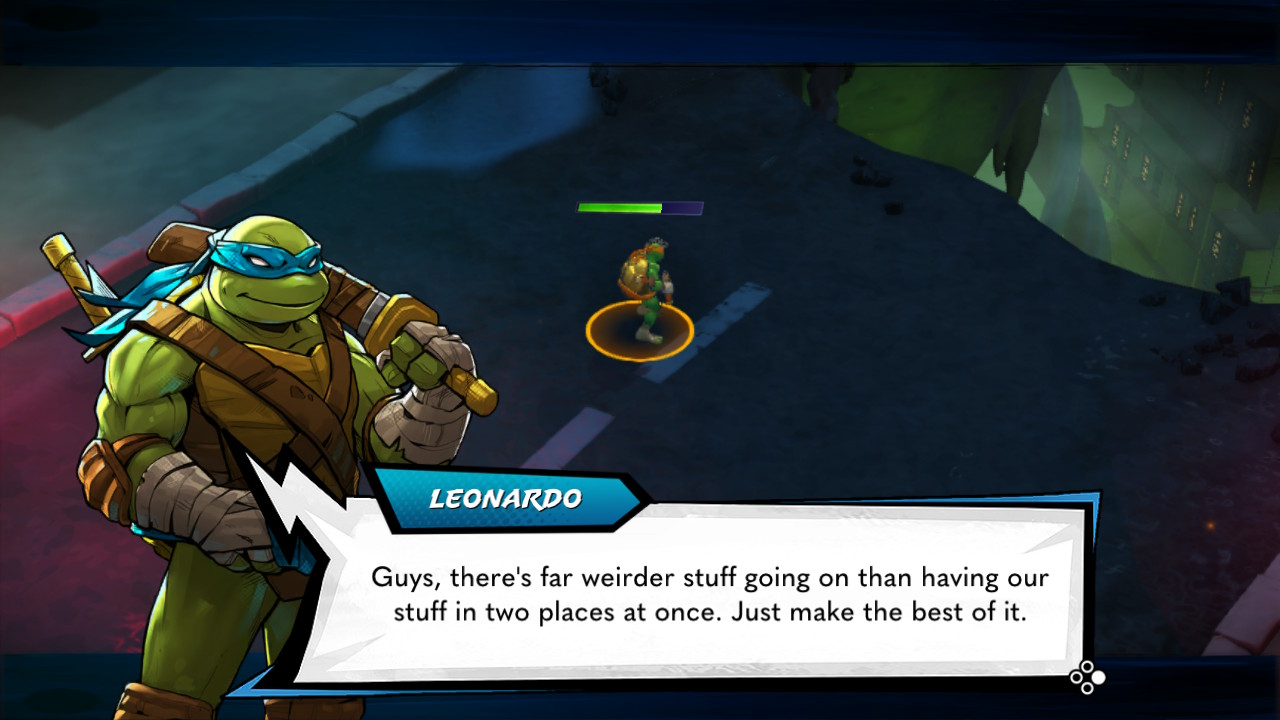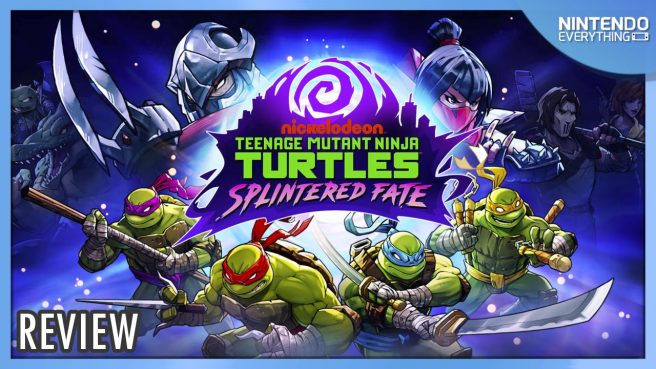[Review] Teenage Mutant Ninja Turtles: Splintered Fate
System: Switch
Release date: July 17, 2024
Developer: Super Evil Megacorp
Publisher: Super Evil Megacorp
Since their debut in the 1980s, it feels as though the Teenage Mutant Ninja Turtles have always been around in some form or another, undergoing a complete visual reboot every few years to appeal to a new audience. Despite this, the franchise as a whole has remained remarkably consistent in terms of characterization, and Teenage Mutant Ninja Turtles: Splintered Fate is another iteration of the four iconic brothers. As a roguelite, it is also an interesting pivot away from the arcade and beat ’em up titles that they typically star in.
Splintered Fate opens with Master Splinter being kidnapped by Shredder, just as mysterious portals open across New York. Naturally, our four heroes are not about to let matters lie, and begin a quest to rescue their missing sensei, battling their way across New York and through various adversaries that fans will immediately recognize, all to reach Shredder. However, things are not quite as straightforward as they first appear, and there are more forces at play than just the Shredder and his Foot Clan that the Turtles will first need to deal with before they can be reunited with Splinter.
The story unfolds as you progress through the game, with most of the narrative happening at the end of each run as the Turtles draw closer to rescuing Splinter and discovering what is going on behind the scenes. It’s an interesting trail of breadcrumbs to follow and serves as a nice additional reward for battling your way through the game, but unfortunately it never provides a satisfying, definitive conclusion, merely trailing off with the promise of more to come should you persevere and continue to play the game. Whether additional story content is coming now that the game has been released on consoles remains to be seen, but at time of writing there is the overwhelming sense of a tale left unfinished.

It’s unfortunate that the narrative doesn’t really do its cast justice, as the game is filled with fully voiced humorous quips and snappy one-liners that perfectly capture both the characters’ personalities and the spirit of the franchise as a whole. You will hear the same lines many times before the ride is over, but the occasional new line of dialogue triggered by doing something different is always exciting, and reveals a little extra something about the cast and their relationships with one another. If you have any prior knowledge of the franchise at all in any capacity you will be immediately familiar with the characters’ timeless personalities, and if this is your first experience with it, it’s as good a point to get to know the turtles as any.
If you’ve ever played a roguelite before, the gameplay loop of Splintered Fate will be immediately familiar. The title takes place across four locations, which are split into a number of smaller stages. Waves of enemies will appear, and defeating them will grant you a reward before you progress to the next stage. Defeat will see you lose the power-ups you’ve collected and returned to the Lair, requiring you to start over from the beginning. You will retain some of the currency you’ve collected to invest in various parameters that will permanently increase your stats, making each run subsequently easier. Like every other roguelite, Splintered Fate is an experience of repeating the same content until you can eventually clear it and, once you do the first time, building on your character’s strength to take on greater challenges.
Splintered Fate gives you numerous tools to play with in order to meet this end. First are the four Turtles themselves, who have their own unique special attack, and a Specialty that provides specific boosts to their capabilities and stats. As you might expect, Michelangelo and Donatello have greater range than Raphael, who has a higher critical hit chance, and Leonardo is more of an all-rounder and can use his special attack twice in a row before it needs to recharge. Their starting Tool can be swapped for another if you happen to find one during a run, and they can also acquire one another’s Specialties, so these differences only serve as a starting point for their playstyle rather than a defining factor, as everything else is shared between the four, and you won’t need to improve their capabilities individually in order to make progress.

Turtle Powers are your bread-and-butter skills that you’ll gain for the duration of a run, and the thing you’ll be relying on the most in order to succeed in the short term. Specific elemental damage or effects and increases to attack, dodge rate, and critical hit chance are some of the things you can expect to pick up. These will form the backbone of your build, and can be combined for a variety of different stronger powers, although the game unfortunately never tells you exactly how to go about this, only that it’s possible to do so, encouraging experimentation. Some of these are more useful than others, although I was quite surprised to find that no element stood out as notably stronger than the rest, allowing for a greater degree of flexibility and customization than in many other roguelites where there is usually one optimal way to go about doing things. The opportunity to acquire new Turtle Powers is given to you randomly when you clear a stage from one of several different categories, although you can only acquire one at a time.
As you progress and clear encounters you’ll also gain three different currencies. Scrap is used during a run, to purchase health restoration and specific Turtle Powers from the shops that will appear once per stage, and you will lose it when you die or finish your current run. The remaining two, Dragon Coins and Dreamer Coins, are used back at the Lair for permanent upgrades, with the former being used to improve the Turtles’ various skills and parameters, and the latter to improve the chance of finding better powers and more currency during a run. In typical roguelite fashion the increases are pitifully small, inconsequential, and generally often don’t feel as though they were worth the trouble, but you gain the currency at a surprisingly generous rate, so the overall sense of progression is quite satisfying initially: after my first run I was able to boost my Attack up by 40% and still had some Dragon Coins remaining, and was able to build up my parameters at a steady rate whilst playing the story, as it takes a fair amount of time before costs begin to skyrocket and require multiple playthroughs (or more dangerous play) to farm enough currency for.
However, there are actually a grand total of nine different currencies that you can earn, and the remaining six are more situational and most feel entirely superfluous. These are tied to defeating specific bosses and challenges or, in the case of Astral Wraps and Talismans, using a specific Turtle to do it. Fortunately you require significantly less of these than you do the coins, and they’re not used up when purchasing upgrades, meaning that they serve more as a check than a currency that you’ll need to spend several hours farming.

A run through the game’s four stages takes around half an hour, and it can often feel as though success or failure is dictated more by RNG than player skill. This is par for the course for roguelites, but Splintered Fate gives you slightly less control over this aspect than most of its peers. Artifacts, which you’ll unlock as you progress, only allow you to guarantee your next Power Selection will be of a particular category, rather than exclude unwanted ones entirely. Between Artifacts and Lucky Dice, which reroll your options, I was usually able to create a serviceable build that was enough to see me through to the end, but this lack of control becomes particularly frustrating when you attempt the game’s more challenging content and “serviceable” doesn’t quite cut it.
Initially you’ll only be able to influence the level of challenge by playing on Easy or Normal difficulty, but as you progress in the game and gain access to new features it can become significantly more demanding. I was quite taken aback when I attempted my first Gauntlet challenge and was quickly wiped out by the boss. Successfully beating a Gauntlet challenge will give you increased normal currency rewards, and they are entirely optional, serving as a nice risk-reward exercise for players looking for a greater challenge, but unwilling to commit to the more daunting Shimmering Portals.
Shimmering Portals will also become available once you’ve defeated the final boss for the first time, and add various permanent difficulty modifiers to the current run, from the standard increase to enemy health and damage, to more interesting things like every Mouser you defeat exploding, or every enemy having a shield on top of their health. In exchange for accepting these, you’ll receive more currency for completing stages, and if you manage to defeat the final boss you’ll be rewarded with Astral Hearts and Astral Wraps specific to the Turtle you used, to unlock the higher tiers of permanent upgrades. The problem with Shimmering Portals is that unlike the Gauntlet challenges they stop showing up if you decline them when they appear, and like Turtle Powers they’re selected at random from a pool of options. However, unlike Turtle Powers you cannot re-roll Shimmering Portals if you’re unhappy with what the game gives you.
The end result is that the more you dive into Splintered Fate, the less balanced an experience it tends to become, with the unpredictability keeping things feeling fresh but often being incredibly frustrating if you’re trying to grind out currency for upgrades, or make a specific build so that you can overcome the challenge. Overall I felt that a little too much is left to chance, as progression slows to a crawl once you begin to require Astral Wraps, Astral Hearts, and Gauntlet Medallions for upgrades, which are essential to success in challenges in the first place, particularly if you haven’t been able to put together a good build from the Turtle Powers the game has decided to gift you with for that particular run. When you are unable to upgrade your character due to a lack of currency and cannot put together a good enough build to get that currency because of RNG, it creates a frustrating block. This is not an uncommon issue in the genre, and isn’t one that players looking only to go through the story are likely to experience, but can become a factor if you intend to dive deeper into the game beyond that.
Splintered Fate runs quite smoothly on Switch, and I only noticed a couple of instances of slowdown when things got particularly hectic with multiple enemies on-screen, all of them hurling some kind of projectile. The default resolution for visuals is quite poor in docked mode, but the game does give you the option of Cinematic Mode, locking gameplay to 30 frames per second in exchange for higher resolution, and it’s a notable improvement. But the resulting hit to the frame rate is quite jarring if you’ve been playing the game on the default settings prior to that. If you’re playing in handheld mode the difference in visuals you get from activating this is negligible, making this a trade-off that isn’t going to be worth it for many, unless playing the game exclusively in docked mode. It’s a nice option to have that shows some clear consideration for the limitations of the hardware and player preferences, at the very least.
The Verdict

As far as roguelites go, Teenage Mutant Ninja Turtles: Splintered Fate is one of the more accessible ones that I’ve played, and is a fantastic entry-level point to the genre for new players. What it lacks in variety in content and player control over the level of challenge it makes up for with the flexibility of the builds you can create and extremely strong characterization. Regardless of your experience with the genre or the Turtles franchise, it’s definitely worth a look.
Teenage Mutant Ninja Turtles: Splintered Fate copy provided by the publisher for the purposes of this review.

